Moses C. Nah
Divide et Impera: Learning impedance families for peg-in-hole assembly
Oct 01, 2024Abstract:This paper addresses robotic peg-in-hole assembly using the framework of Elementary Dynamic Actions (EDA). Inspired by motor primitives in neuromotor control research, the method leverages three primitives: submovements, oscillations, and mechanical impedances (e.g., stiffness and damping), combined via a Norton equivalent network model. By focusing on impedance parameterization, we explore the adaptability of EDA in contact-rich tasks. Experimental results, conducted on a real robot setup with four different peg types, demonstrated a range of successful impedance parameters, challenging conventional methods that seek optimal parameters. We analyze our data in a lower-dimensional solution space. Clustering analysis shows the possibility to identify different individual strategies for each single peg, as well as common strategies across all pegs. A neural network model, trained on the experimental data, accurately predicted successful impedance parameters across all pegs. The practical utility of this work is enhanced by a success-predictor model and the public availability of all code and CAD files. These findings highlight the flexibility and robustness of EDA; show multiple equally-successful strategies for contact-rich manipulation; and offer valuable insights and tools for robotic assembly programming.
Robot Control based on Motor Primitives -- A Comparison of Two Approaches
Oct 28, 2023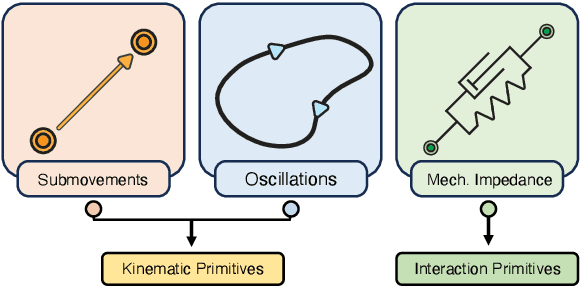
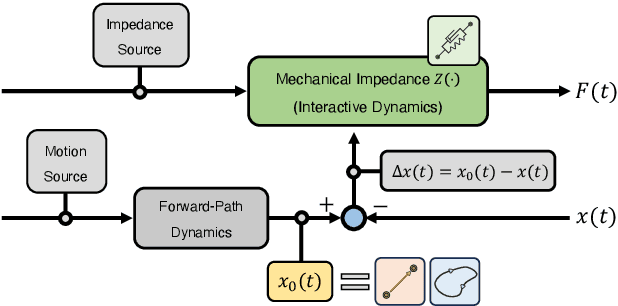

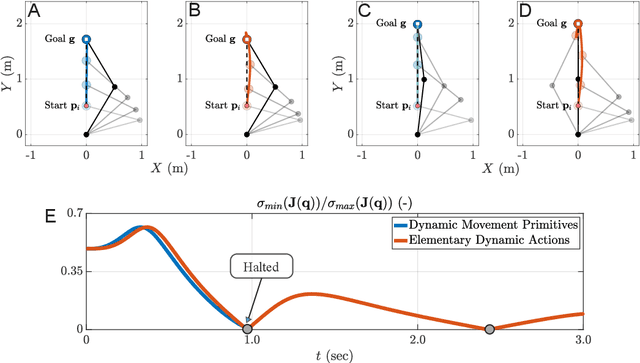
Abstract:Motor primitives are fundamental building blocks of a controller which enable dynamic robot behavior with minimal high-level intervention. By treating motor primitives as basic "modules," different modules can be sequenced or superimposed to generate a rich repertoire of motor behavior. In robotics, two distinct approaches have been proposed: Dynamic Movement Primitives (DMPs) and Elementary Dynamic Actions (EDAs). While both approaches instantiate similar ideas, significant differences also exist. This paper attempts to clarify the distinction and provide a unifying view by delineating the similarities and differences between DMPs and EDAs. We provide eight robot control examples, including sequencing or superimposing movements, managing kinematic redundancy and singularity, obstacle avoidance, and managing physical interaction. We show that the two approaches clearly diverge in their implementation. We also discuss how DMPs and EDAs might be combined to get the best of both approaches. With this detailed comparison, we enable researchers to make informed decisions to select the most suitable approach for specific robot tasks and applications.
Kinematic Modularity of Elementary Dynamic Actions
Sep 26, 2023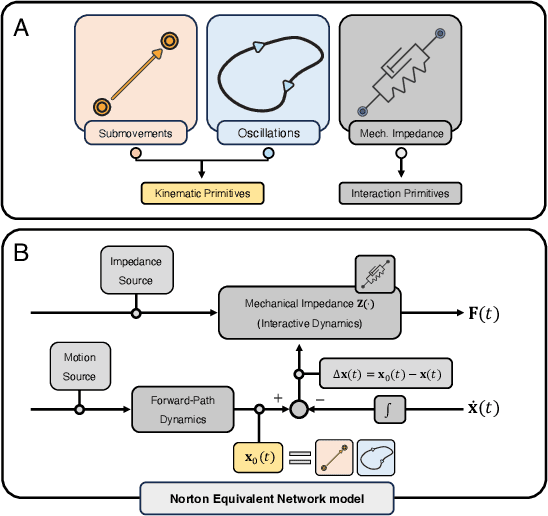
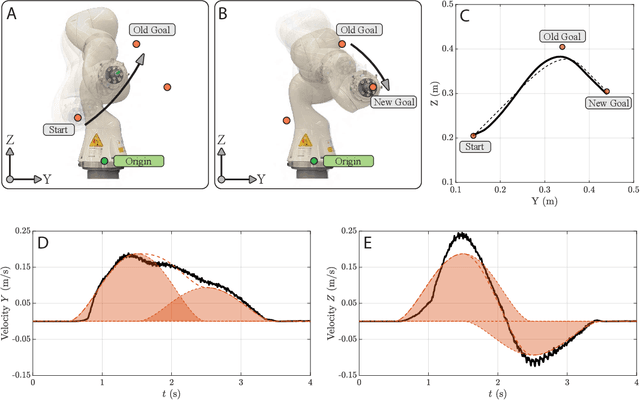
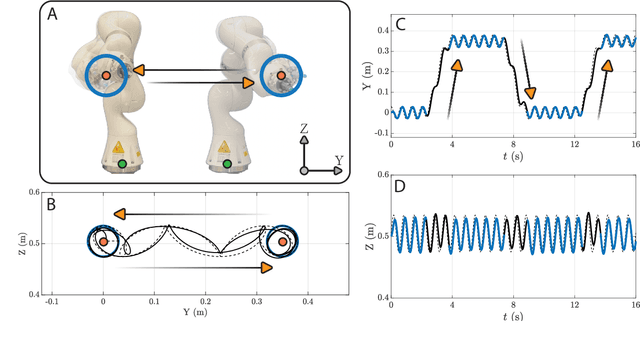
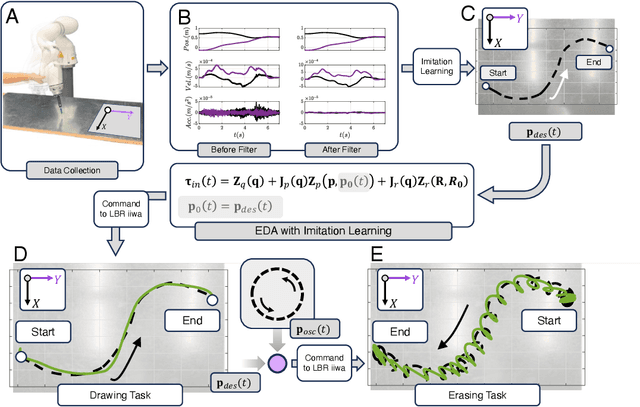
Abstract:In this paper, a kinematically modular approach to robot control is presented. The method involves structures called Elementary Dynamic Actions and a network model combining these elements. With this control framework, a rich repertoire of movements can be generated by combination of basic kinematic modules. Each module can be learned by Imitation Learning, thereby resulting in a modular learning strategy for robot control. The theoretical foundations and their real robot implementation are presented. Using a KUKA LBR iiwa14 robot, three tasks were considered: (1) generating a sequence of discrete movements, (2) generating a combination of discrete and rhythmic movements, and (3) a drawing and erasing task. The obtained results indicate that this modular approach has the potential to simplify the generation of a diverse range of robot actions.
Exp-A Robot modeling Software based on Exponential Maps
Sep 13, 2023Abstract:$ $Deriving a robot's equation of motion typically requires placing multiple coordinate frames, commonly using the Denavit-Hartenberg convention to express the kinematic and dynamic relationships between segments. This paper presents an alternative using the differential geometric method of Exponential Maps, which reduces the number of coordinate frame choices to two. The traditional and differential geometric methods are compared, and the conceptual and practical differences are detailed. The open-source software, Exp[licit], based on the differential geometric method, is introduced. It is intended for use by researchers and engineers with basic knowledge of geometry and robotics. Code snippets and an example application are provided to demonstrate the benefits of the differential geometric method and assist users to get started with the software.
 Add to Chrome
Add to Chrome Add to Firefox
Add to Firefox Add to Edge
Add to Edge